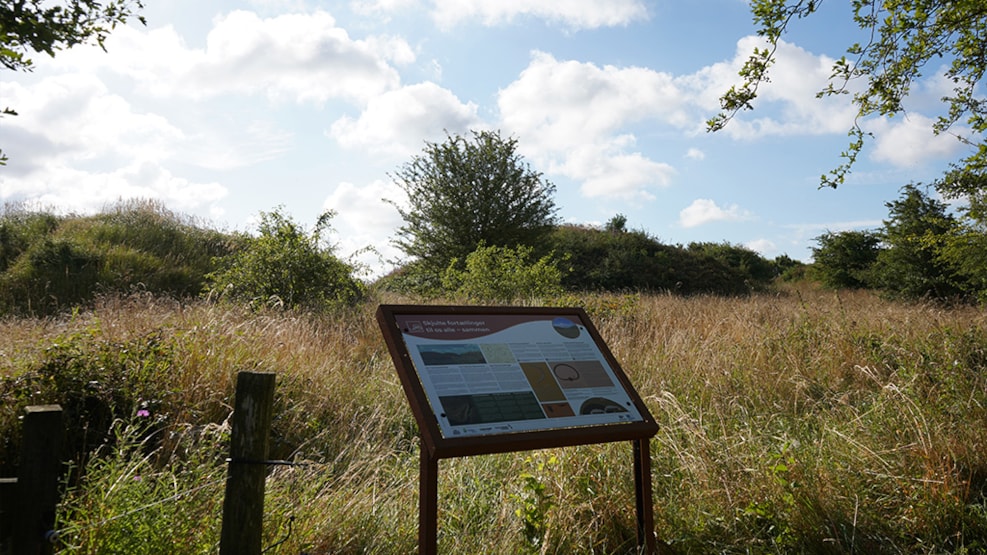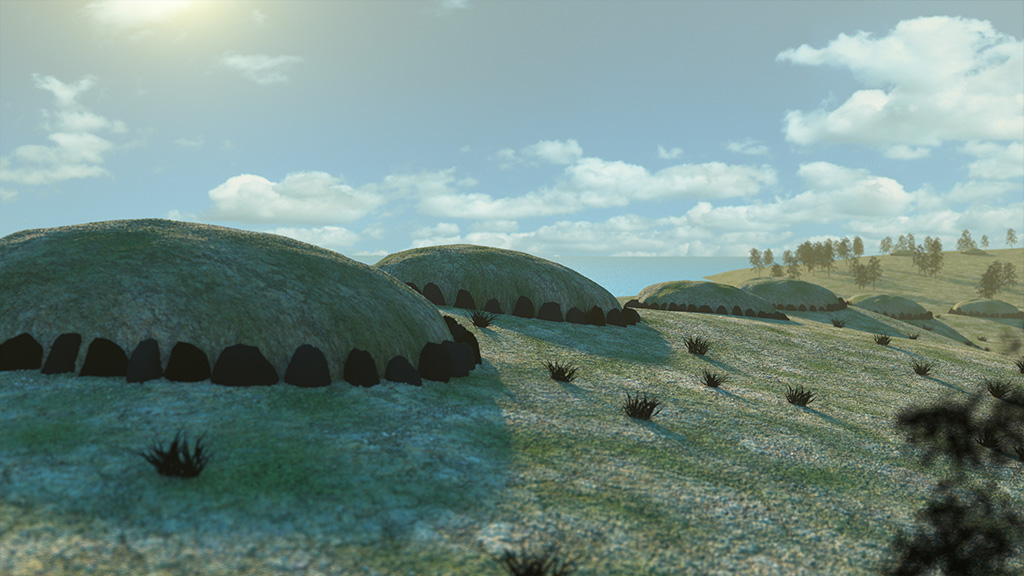
Bronze Age barrows at Tryggelev Nor
Originally there were seven Bronze Age mounds on the small headland at Tryggelev Nor, but only three are preserved today.
Originally seven barrows were found here by Tryggelev Inlet. Agriculture has over the last couple of centuries had an impact which means that only three remain today. This has been the fate of thousands of grave mounds in the Danish landscape, as the stones from the graves provided a handy supply of building materials.

Bronze Age barrows were built of turf and were therefore gradually levelled with a plough when the fields around the barrows were ploughed. The nutrient-rich topsoil was a welcome addition to the field’s crops, therefore it made sense for the farmer to pull the plough a little further up the sides of the mound each year until the levelling was complete. The introduction of swing ploughs severely affected the number of burial mounds. Over the years, many of the grave mounds have also been plundered for antiquities that could fetch a good price from collectors.
In the registrations of ancient monuments in Denmark in the mid-1800s, five barrows were registered at Trehøje, but if we look further back to the earliest precise mapping of agricultural land in the king-dom, in this case from 1810, no less than seven barrows are found on the headland.
Around 20,000 large Bronze Age barrows, such as these at Trehøje, are known in Denmark, but this is only a fraction of what once exis- ted. One estimate is that only about a quarter of the burial mounds are preserved.
Bronze Age finds
The moist environment inside the barrows has preserved many of the graves that were once placed inside. One barrow can hide several graves, both coffin graves made of hollowed-out tree trunks, or urn graves set into the sides of the barrows.
Exquisite goods were sent with the dead to the grave. The gifts were usually jewellery and weapons made of the precious material bronze - the raw materials had to be brought to the country through trade networks across Europe from the Mediterranean.
The bronze was made into many different objects, including tools, weapons and jewellery, but also ritual objects such as lurs were made from bronze. The lur is a wind instrument that has been sacrificed at bog burials in many parts of Denmark. Therefore, there is no doubt that they were an important part of the ritual acts of bog sacrifices.